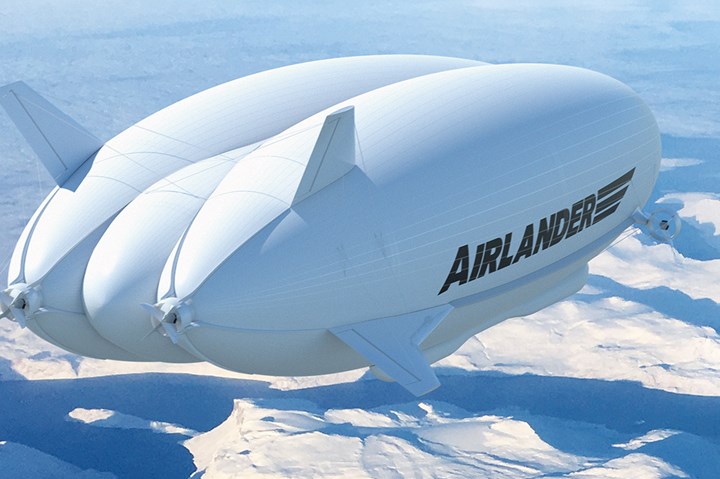Hybrid Air Vehicles joins Telecom Infra Project
Retaining a large payload and long endurance capabilities, the company’s Airlander aircraft has the potential to improve internet connectivity for millions of people.

Photo Credit: Hybrid Air Vehicles
Hybrid Air Vehicles (HAV; Shortstown, Bedford, U.K.) recently announced that it has joined the Telecom Infra Project (TIP) a global collaborative telecom community, and TIP’s Non Terrestrial Connectivity Solutions (NTCS) project group with its composites-intensive Airlander aircraft. (For background on the Airlander 10 and its composite components, see the post “Luxury travel by airship returns”.)
The project’s goal — to develop and deliver new, non-terrestrial solutions that will provide connectivity to areas that terrestrial solutions cannot cover efficiently — is chaired by Telefónica (Madrid, Spain) and Vodafone (Berkshire, U.K.) and is said to include participants from the full value chain, including sky platform players, telecom tech vendors, operators and service providers.
According to HAV, half of the world’s population is still not connected to the internet, and for those who are, connectivity is often insufficient. The company notes that with Airlander’s large payload and long endurance capabilities, the electric-propulsion, helium-filled, hybrid aircraft has potential to provide a resilient pseudo-satellite capability, which would deliver connectivity with minimal need for ground infrastructure. It is said that this could be deployed on demand, in emergencies and could also be a part of an ecosystem delivering service. HAV says Airlander provides airborne services with 90% fewer emissions than today’s aircraft.
“Airlander’s capabilities lend themselves to a wide number of uses that solve modern challenges, including mobility, logistics and communications with very low emissions,” says George Land, HAV commercial business development director. “With the ability to stay airborne for days while carrying large payloads, we believe Airlander can form a part of a telecoms solution providing internet connection to unconnected areas. We are pleased to be able to come together with telecom giants such as Vodafone and Telefónica to explore innovative ways to connect our world.”
View the project group charter for more information.
Related Content
-
Materials & Processes: Fabrication methods
There are numerous methods for fabricating composite components. Selection of a method for a particular part, therefore, will depend on the materials, the part design and end-use or application. Here's a guide to selection.
-
The state of recycled carbon fiber
As the need for carbon fiber rises, can recycling fill the gap?
-
Materials & Processes: Composites fibers and resins
Compared to legacy materials like steel, aluminum, iron and titanium, composites are still coming of age, and only just now are being better understood by design and manufacturing engineers. However, composites’ physical properties — combined with unbeatable light weight — make them undeniably attractive.
















